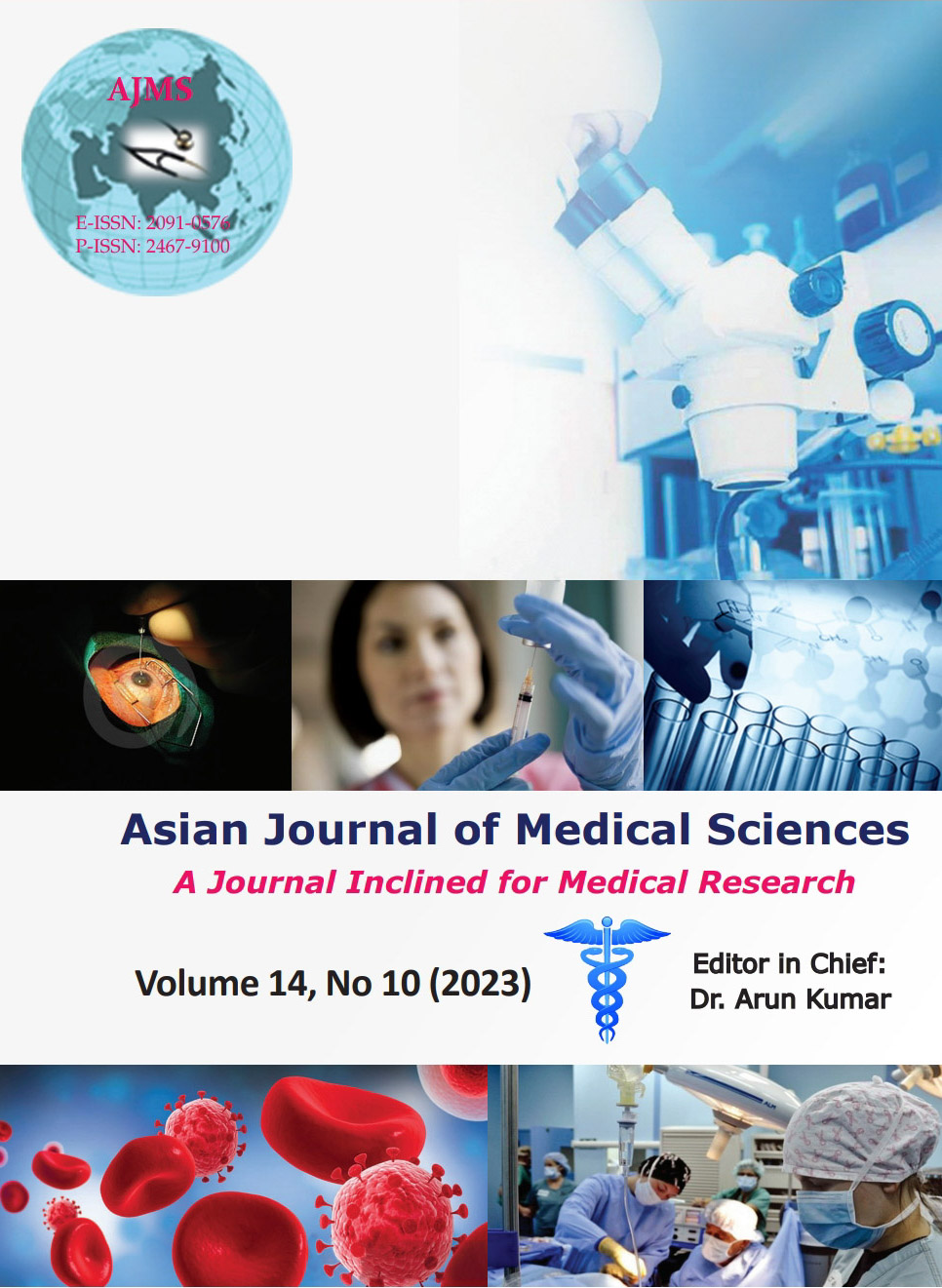Comparative analysis of fructosamine and HbA1c as a glycemic control marker in Type 2 diabetes patients in a tertiary care hospital study
Keywords:
Glycosylated hemoglobin; Fructosamine; Type II diabetes mellitusAbstract
Background: Fructosamine (FA) is a marker of plasma glucose value that reveals the short-term glycemic level for 2–3 weeks. While measuring the plasma glucose level over 2–3 months with glycated hemoglobin (HbA1c) is a common practice.
Aims and Objectives: This study aims to demonstrate the relationship between HbA1c and FA levels in Type II diabetes mellitus.
Materials and Methods: This prospective and cross-sectional study was conducted from January 2021 to January 2022, involving Type 2 diabetic patients attending both inpatient and outpatient at Sree Balaji Medical College and Hospital, Chennai. HbA1C, FA, postprandial blood sugar (PPBS), and fasting blood sugar (FBS) were estimated. The collected data were analyzed with IBM SPSS Statistics for Windows, Version 23.0. (Armonk, NY: IBM Corp). To assess the relationship between the variables, Pearson’s Correlation was used.
Results: We analyzed 61 known Type 2 diabetic subjects in our study. Most patients were in the 51–60 age groups, with the mean age of the cohorts being 56.2 years, SD±10.1. There were 28 females and 33 in this study. Comparing HbA1c with FA, a statistically significant correlation was noted (P<0.001), with a Pearson correlation value of 0.924. A similar strong positive correlation was also noted between HbA1c and FBS, PPBS, and FA, and PPBS.
Conclusion: The link between FA and HbA1c is highlighted in this study. Since FA’s correlation with HbA1c is proven to be statistically significant, it can be utilized as an alternative to or addition to HbA1c in the assessment of blood glucose management.
Downloads
Downloads
Published
How to Cite
Issue
Section
License
Copyright (c) 2023 Asian Journal of Medical Sciences

This work is licensed under a Creative Commons Attribution-NonCommercial 4.0 International License.
Authors who publish with this journal agree to the following terms:
- The journal holds copyright and publishes the work under a Creative Commons CC-BY-NC license that permits use, distribution and reprduction in any medium, provided the original work is properly cited and is not used for commercial purposes. The journal should be recognised as the original publisher of this work.
- Authors are able to enter into separate, additional contractual arrangements for the non-exclusive distribution of the journal's published version of the work (e.g., post it to an institutional repository or publish it in a book), with an acknowledgement of its initial publication in this journal.
- Authors are permitted and encouraged to post their work online (e.g., in institutional repositories or on their website) prior to and during the submission process, as it can lead to productive exchanges, as well as earlier and greater citation of published work (See The Effect of Open Access).




